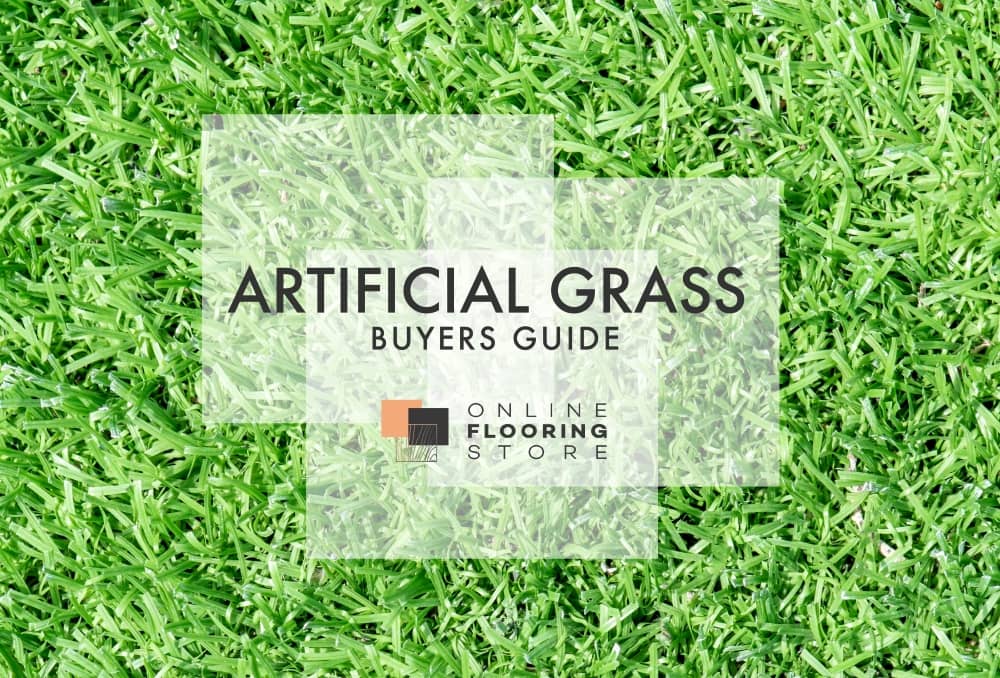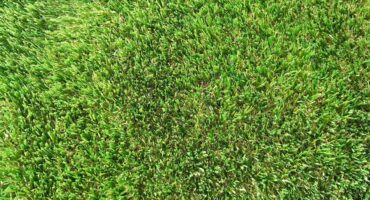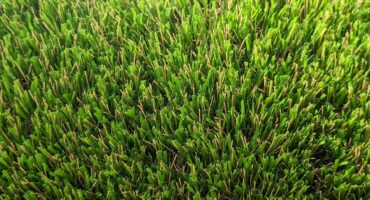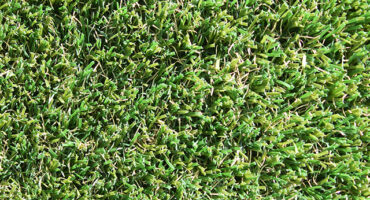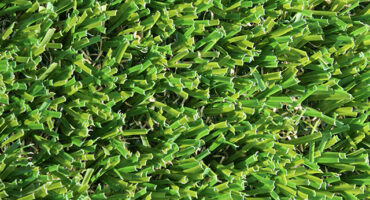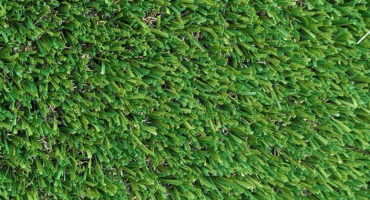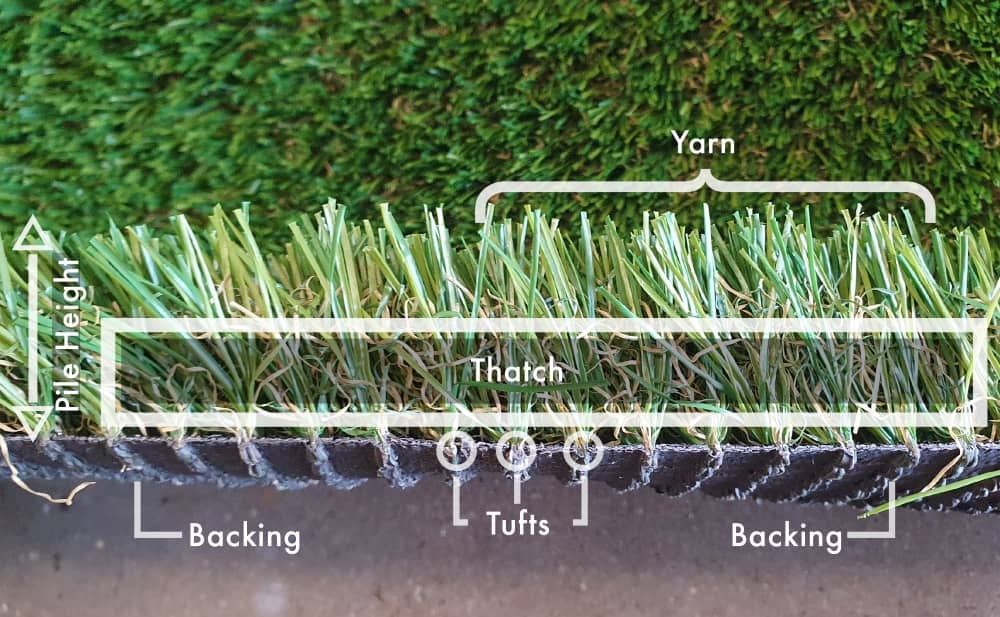Maintaining your lawn can be difficult in Australia, particularly in warm climates, and it can feel like a constant battle watering and seeding in dead areas after foot traffic. When it first came out, the concept of artificial grass went against the status quo in the 1970s especially considering there had not been much product development. It was widely considered to look ‘very fake’.
Due to product development and a broader selection in recent years, fake or artificial grass has gained popularity and appearance. Housing areas are denser, and people generally work more and have less time to maintain a lawn. For some, there might be a slight sense of defeat when deciding to go with fake grass, but we believe you will be pleasantly surprised at how many benefits there can be. Artificial grass has taken hold and becomes a part of the modern Australian home, creating a low-maintenance outdoor space.
Although there is no more fighting over who has to mow the lawn; there are some points we would like to make you aware of before you finalise your purchase.
Why Choose Artificial Grass?
- Fake grass provides an immediate impact all year round, with no need to wait for the grass to grow
- An area that once took up so much time now requires little to no maintenance with durability specifically designed to withstand children and pets’ constant wear and tear
- If you worry about mud being walked inside the house in wet months, fake grass completely alleviates that problem
- No pesticides or weed killers are needed
- Eco friendly in the sense you don’t need to water it
Side note: Get clear on what you need fake grass for, as this will determine the type, colour and texture you decide.
Affordability
From a time point of view, fake grass is cheap, but the initial outlay will cost more than natural grass (see our page for artificial grass price Australia examples). Fake grass is sold as square metres, making it easy to compare quality and cost. Be sure to measure your area well to get a good idea of the overall cost. DIY installation can be a good option, but if you are not already in the know-how, then extensive research on your behalf will be required to ensure you get it right. For the best result, we recommend a professional installer, which may save you money in the long run.
Artificial grass price fluctuates quite dramatically, and as we outline below generally, the more you pay in the beginning, the less stress you deal with later on.
We would also like to point out that there are great Australian made products that Australian suppliers will be biased towards. But in all honesty, some fantastic options are coming from places like China also, and at the Online Flooring Store, we believe in giving people a choice in both quality and origin of products (provided they pass our quality tests of course).
Side note: Installing fake grass will roughly cost double what it costs to grow a natural lawn area, depending on whether you use a professional installer or not.
Later on, we disclose approximate costs in a DIY/Professional installation comparison.
Backing and Infill
In a nutshell, infill is the stuff you spread on top of your lawn to anchor it in place.
Standard infill is sand, but some other products may be used:
- Cooling infills to lower grass temperature
- Pet-friendly infills absorb ammonia in urine
- Shock absorption infill can further safety proof your turf
Determining the amount of ground preparation work before artificial grass is put down will dramatically affect the cost. Synthetic grass is a porous surface, meaning water will drain through it. If the texture is too dense, you will need to remove some existing soil and introduce sand or gravel to ensure this doesn’t happen. This can be a huge job for DIY’ers.
For very high rainfall areas, you may be required to install a heavy-duty drainage system such as a soak well. Artificial grass is very problematic without proper drainage.
Side note: Polyurethane or latex is used for synthetic grass backing. We recommend sticking to polyurethane because it will not expand or contract in extreme heat fluctuation.
How to Lay Artificial Grass on Uneven Ground
Uneven ground such as tree roots, weeds, and mounds must be removed and rectified before installation. You shouldn’t install over rough ground, and you need a completely level surface to lay on. Installing artificial grass on uneven ground leaves you wide open to various problems, including unsecured edges, visibly messy appearance, inevitably uneven joins and drainage issues. But by far, the biggest concern is a safety issue for kids and pets who run around in the area.
Levelling sloping gardens can be a tedious job for inexperienced first-time DIYers.
Generally, you will need to dig up the entire area, remove older grass and debris & smoothen out the ground with sand and gravel.
Can You Drive on Artificial Turf?
Whether you can drive on synthetic grass will depend on proper ground preparation. The ground will need to be well compacted and 100ml plus of a gravel & sand subbase to sustain the weight of an SUV in parking areas adequately.
Pile Height
Various grass heights (Pile heights) are measured from the backing to the end of the tip. It would help if you chose a pile height in congruence with your lifestyle needs.
Grass over 30mm will give a greener, luscious look, whereas below this measurement will give a neater look for high traffic areas. Be careful not to choose longer blades in high traffic areas as they will bend over time. You will still have to brush forward any blades with a broom but not nearly as much. If backyard cricket is your family’s jam, opt for the shorter option and happy batting.
If you intend to lay tables and chairs over the grass, the shorter option will be a superior choice for your family.
Denser and often more expensive options will also come with more substantial and extended guarantees, so check that information before purchasing. Although some suppliers offer up to 25 years or even a lifetime warranty, standard warranties are ten years.
Weight & Density
Put simply, Good quality grass will generally be heavier. Density refers to the number of yarns per square foot, and higher density means more durability. If you are installing on an elevated platform such as a patio, you will need to be aware of the load-bearing capabilities of the structure.
Side note: Density is measured by dividing face weight by pile height.
Weight is broken up into two categories:
Face Weight
- It is measured in yarns per square metre
- Higher means the grass is both denser and longer
- It can be compared to thread counts in linen (the higher, the better)
- Higher face weight means more strands of grass & thatch
Backing Weight
- Refers to the backing and coating of the turf per square foot
- A higher backing weight means a more durable product
- Lower backing weight may also mean the product is only suitable for decorative purposes
Total Turf Weight
- The combination of face and backing weights
Colour
There are two elements to keep in mind here. The grass colour and also the thatch (fake dead grass), and there is a vast range of combinations to consider. What looks natural in your garden will be different in another garden. The best and only way to get this right is to order samples and look at the sample at different kights and times of the day.
The best products to choose from have varying shades of green to create a much more natural look.
Side note: Artificial grass can often look “too immaculate” with cheap alternatives, and it will be so obvious it is not the real deal.
Quality
You can also compare quality with colour when you have samples. Look at the yarn and backing quality and make sure there is something that guarantees minimal (if any) fading from sun exposure. Texture-wise it should feel close to the real thing. Be sure to make sure water can quickly get through with larger holes for heavy rainfall.
A good quality synthetic grass will be made of polypropylene, polyamide, and polyethylene yarns and often blended. Look for an even backing and well-stitched tufts. Although pricier initially, you will save more later with a quality product.
Maintenance
You guessed it. The more it generally costs, the less time and money you will spend maintaining it.
Also, consider the area you live in. Will heavy runoff or tree limbs fall onto the synthetic grass? And will the durability match up?
We recommend cleaning your artificial grass by using a leave blower, stiff brush or rake to remove leaves and other debris. You will also need to use turf deodoriser to drive away pet urine stench if you have pets. Alternatively, you can use baking soda washed away with a water and vinegar solution, and solid pet waste requires a scoop followed by a quick hose squirt.
Radiant Heat
It is not just burning the grass itself we are concerned with. The air temperature surrounding unshaded fake grass can be elevated, which can be an issue for children and pets. In Australia, a hot summer’s day is already scorching, and in combination with hot artificial turf will increase the risk of dehydration and heat-related health issues.
If there is little airflow surrounding your property, it can even feel hotter inside your home. So your water bill might be lower, but your aircon bill could skyrocket.
How do we combat this? Simple! The online flooring store’s “cool touch” artificial grass is the perfect solution to this problem.
Features to Look for in Your Fake Turf
- UV protection – prevents fading and breakdown of your lawn under UV exposure
- Cooling Tech – Uses the latest product innovation to be cooler under radiant heat.
- Sustainability – Some quality fake lawns substitute (some) materials with sugar cane instead of using 100% plastic
DIY vs Professional Installation
As we touched on before, the following will have the biggest bearing on immediate pricing:
- Artificial grass quality
- Choosing an installer or not
- Required ground preparation
Side note: As a loose general rule, expect to pay double if you use an installer.
Many suppliers, including us, sell directly to customers. We estimate laying 50m2 yourself could cost you anywhere from $1450 to $3000.
DIY saves you money but put your ego aside and ask yourself if you have the required skills because there are a few.
Associated Costs with DIY
- Good quality fake grass will cost between $19-$41 per square metre.
- Base preparation is essential for proper drainage, and as you can imagine a nightmare to discover later, you must start again. You need a level crushed rock-based with a finer layer of stone and sand. For a 50m2 backyard, expect to pay $200 – $300 for the rocks & sand. On top of that, you need to hire a trailer for transport and a compactor ($40 – $60 per day) to create an even compacted surface.
- The infill required will be roughly 10kg of sand per square metre (but follow the supplier’s recommendations). Most suppliers will recommend sand, and a 20kg bag will cost around $10.
- Joining tape used to join the turf cost about $20 for 5 metres
- Turf pegs are roughly $15 for a 20 pack and are used to secure the artificial grass
Cons of DIY
If you get it right, installing artificial turf undoubtedly saves you money. But is it worth the risk?
Some common pitfalls include:
- Bad or no base preparation: The base layer might not be adequately compacted or compacted at all, causing uneven ground, drainage issues and a messy appearance
- Poor laying: If the lawn is laid incorrectly, you will see apparent gaps and joins. If your joins are weak, the turf will move and break apart.
- Not enough infill: The turf can move out of place easily
Side note: For the above reasons; we recommend using a professional installer.
Professional installation Costs
Expect to pay $50 – $65 per square metre for labour, depending on the intricacy of the job. A combination of turf plus labour costs will be anything from $80 – $105 per square metre.


